Introduction & Test System
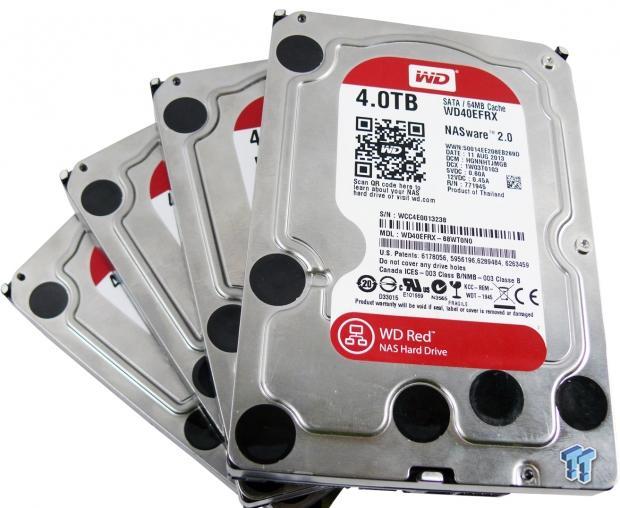
Over the last few months, I have been running a set of WD Red drives in my Qnap TS470. Within that time, my NAS became cluttered with tons of data that I have had backed up along with all the media that my wife and I have synchronized to the system. Since it was time for me to dump the NAS and clean out old and otherwise unwanted files, I thought there was no better time to throw these drives into the test system, setup a few RAID arrays, and see just how well they perform.
In this article, we will examine the performance of four 4TB WD Reds in RAID modes 0, 5, and 10. This should give a good idea of performance outside the traditional NAS box for those of you wanting to build a storage server yourself.
You can read the full consumer review of the WD Red 4TB HDD here.
Desktop Test System
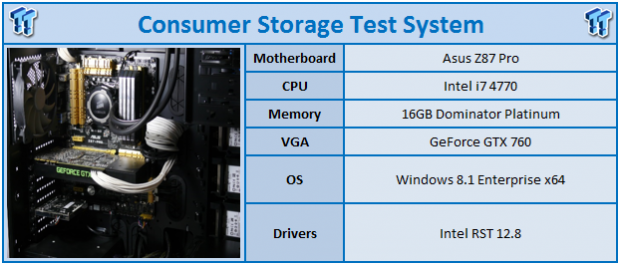
Our consumer storage testing platform consists of an ASUS Z87 Pro with an Intel Core i7-4770 at the heart. Memory consists of a 4 x 4GB configuration of Corsair Dominator Platinum, which is rated at 2800MHz; I run these at 1600MHz to more accurately resemble a typical modern system. Seagate 600 Pro 200GB SSDs provide storage of the test system.
For this article, we used the Intel onboard RAID option rom 12.7. Benchmarks used in the process include IOMeter version 1.1.
PRICING: You can find the Western Digital Red HDD for sale below. The prices listed are valid at the time of writing but can change at any time. Click the link to see the very latest pricing for the best deal.
United States: The Western Digital Red (4TB) HDD retails for $184.99 at Amazon.
Canada: The Western Digital Red (4TB) HDD retails for CDN$229.66 at Amazon Canada.
Australia: The Western Digital Red (3TB) HDD retails for $217.99 AUD at Mighty Ape Australia.
New Zealand: The Western Digital Red (3TB) HDD retails for $242.99 NZD at Mighty Ape NZ.
Benchmarks - 4k Random Performance & Response Times
IOMeter - 4k Random Performance with QD
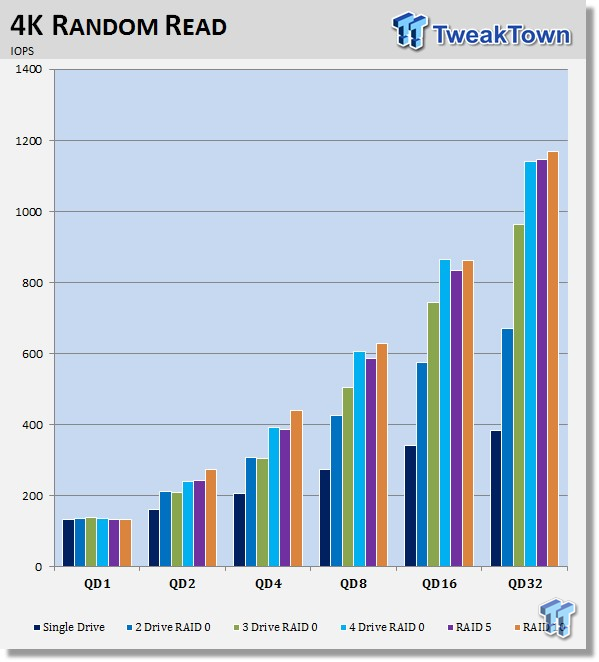
In our first chart above, we have the random read performance of four drives in several configurations. As you can see, all RAID modes perform about the same as a single drive at QD1, but things quickly start changing as we ramp up the queue depth.
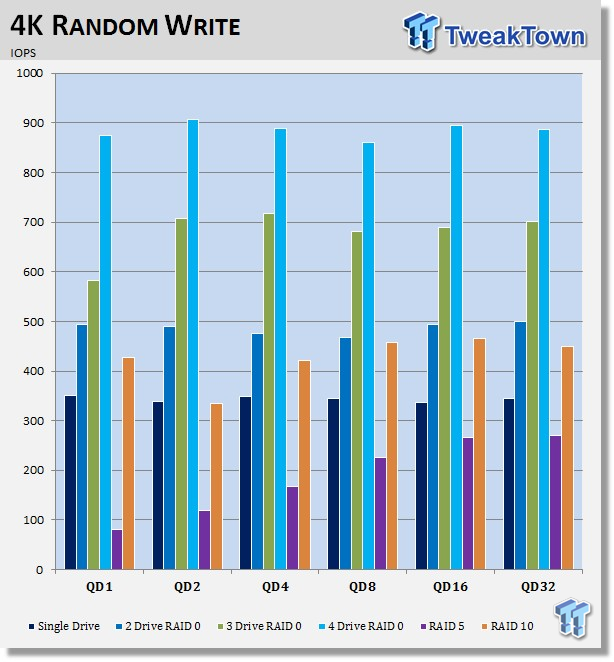
Random write shows a little more performance variance between each RAID mode. RAID 0 performs the best, as expected, with RAID 10 on par with a two-drive RAID 0 array.
IOMeter - 4k Random Response Times with QD
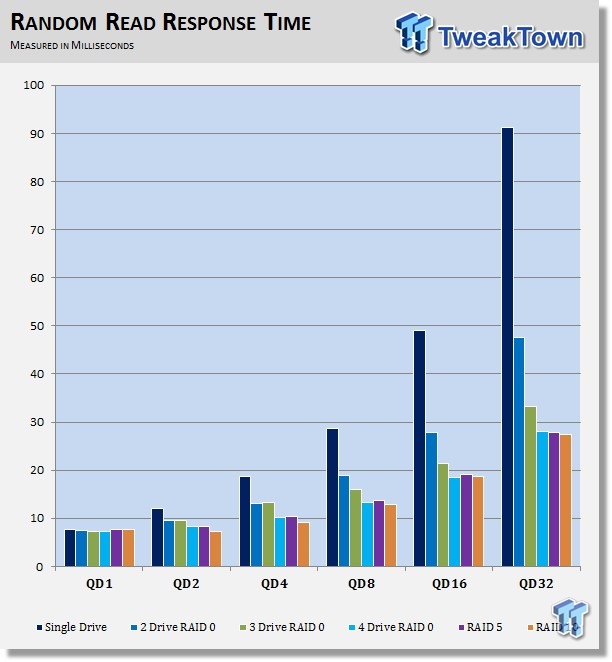
Random read response times were at their best with RAID 5, 10, and a four-drive RAID 0 array.
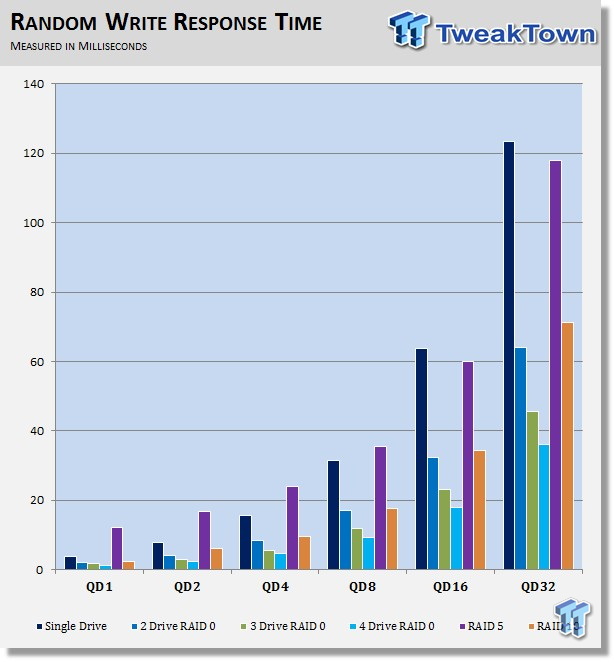
Random write response times were the lowest with the four-drive RAID 0 array and highest with the single drive and RAID 5 array.
Benchmarks - Sequential Performance & Response Times
IOMeter - Sequential Performance with QD
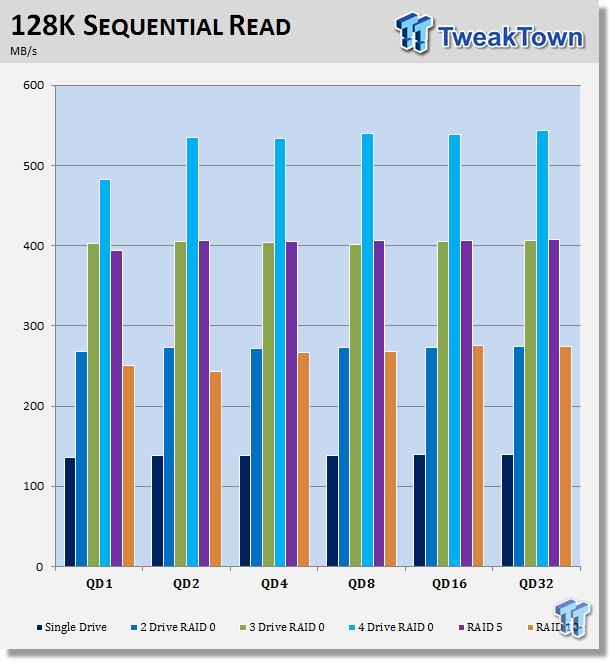
Starting off with sequential read, we find the four-drive RAID 0 array topping the charts close to 550 MB/s. Second in line, we have the three-drive RAID 0 and RAID 5 neck and neck at 400 MB/s
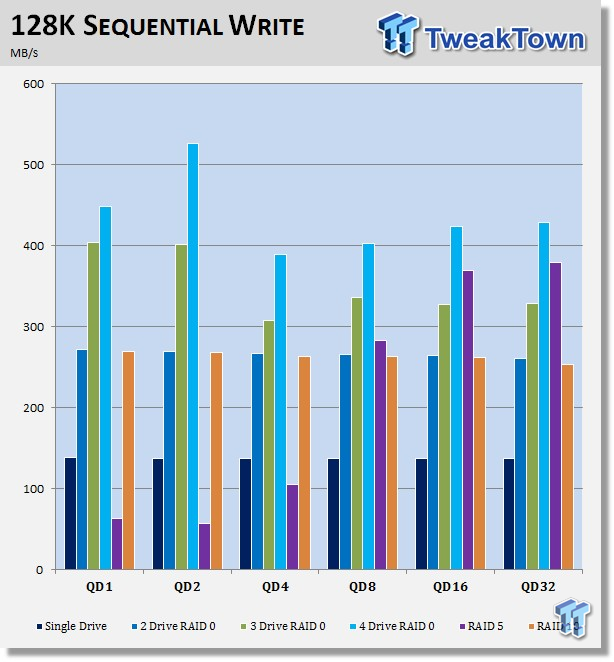
Sequential write had the four-drive RAID 0 out in front again with the three-drive array not far behind through lower QD. When we move to higher QD, the RAID 5 array scales up and takes second spot on the chart.
IOMeter - Sequential Response Times with QD
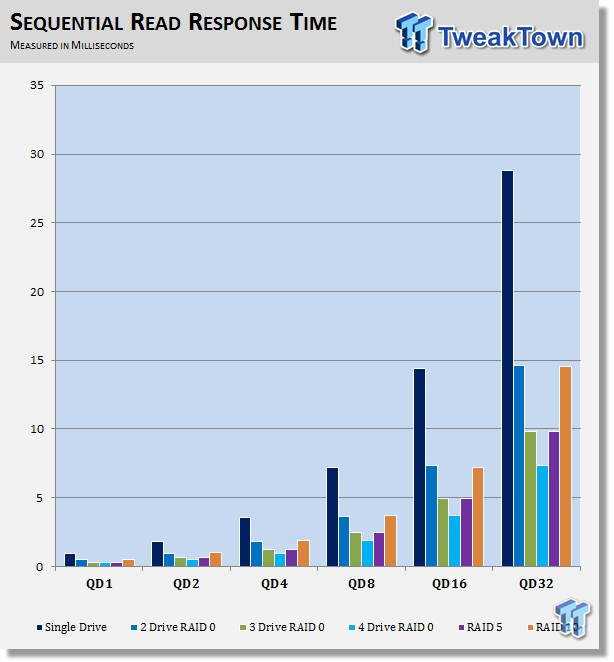
Sequential read response times were the highest with a single drive at high QD.
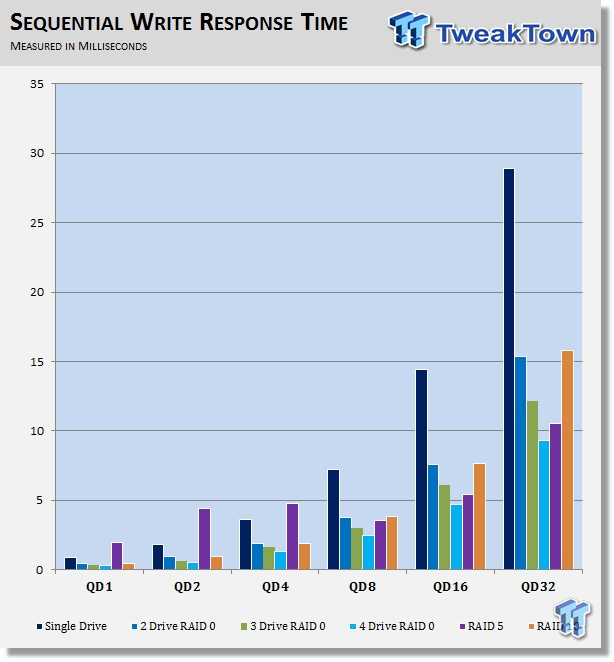
Sequential write response was again at its highest with a single drive, following this, we have RAID 10 and the two-drive RAID 0 array.
Power Consumption
Our custom power testing samples each drive for a period of three minutes across each workload. In order to offer more granularity, we sample the power in one-second intervals.
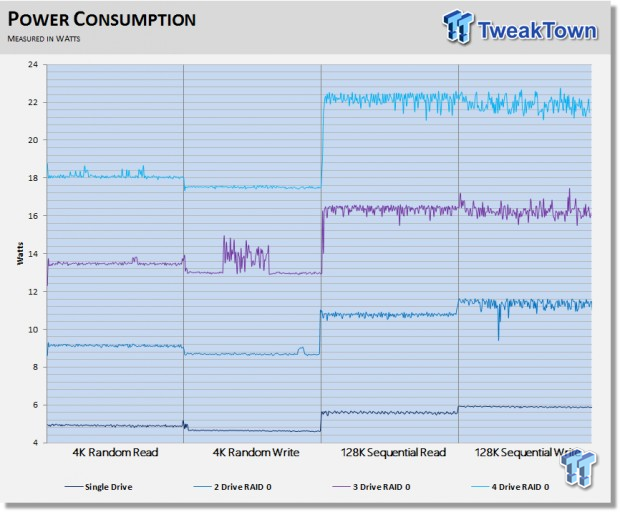
Here we have the power consumption for each RAID 0 array we used and tested. Above, you can see the number of drives scaling with power as expected. Four drives used a peak of 22 watts, and three drives used 17 watts. The single and two-drive array came in at 6 watts and 11.5 watts, respectively.
Final Thoughts
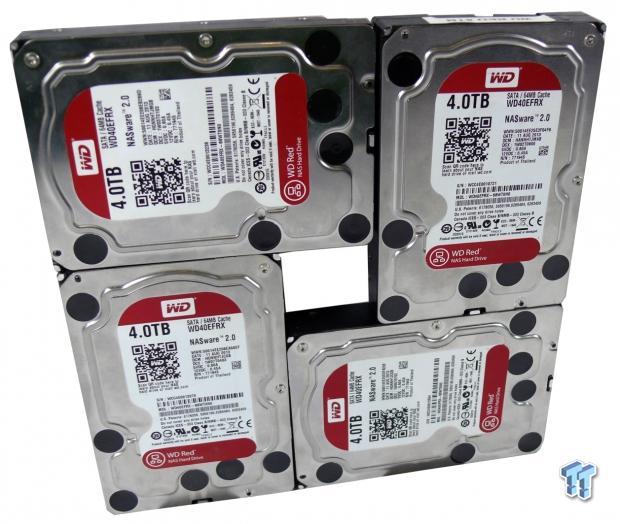
Well there we have it; the WD Reds do perform quite well in RAID. At the drives' peak, we measured close to 550 MB/s read at QD32 in our four-drive RAID 0 array. With RAID 5, we achieved a peak rate of 400 MB/s, which was on par with the three-drive RAID 0. As far as write performance went, we had a peak rate just over 400 MB/s with our four-drive RAID 0, while RAID 5 was closer to 375 MB/s.
Read response times for the WD Reds were at their best with RAID 10, but not far behind was the four-drive RAID 0 array, and even RAID 5 was knocking on the door as well. Over with write response times, we found the single-drive configuration to have the highest response time, next to the RAID 5 array. The best times were found with the four-drive RAID 0 and three-drive RAID 0 arrays.
Power Consumption of four drives came in around 22.2 watts at its peak during sequential testing, while random came in at 18 watts. Three drives consumed 17 watts during sequential workloads and just under 14 watts with random. Single and our two-drive RAID 0 came in at 6 watts and 11.5 watts.
In closing, I will say that the Reds are a great drive for those of you wanting to build storage servers, or just want to run a few drives in RAID for the increased performance or redundancy. Power consumption of the Reds is next to reliability with these drives being the most efficient on the market. If you want to see more hard drive RAID reviews, please do let me know; I do, however, have a few 4TB Seagate NAS drives that I will be testing, so you can look forward to that in the coming months.
PRICING: You can find the Western Digital Red HDD for sale below. The prices listed are valid at the time of writing but can change at any time. Click the link to see the very latest pricing for the best deal.
United States: The Western Digital Red (4TB) HDD retails for $184.99 at Amazon.
Canada: The Western Digital Red (4TB) HDD retails for CDN$229.66 at Amazon Canada.
Australia: The Western Digital Red (3TB) HDD retails for $217.99 AUD at Mighty Ape Australia.
New Zealand: The Western Digital Red (3TB) HDD retails for $242.99 NZD at Mighty Ape NZ.

